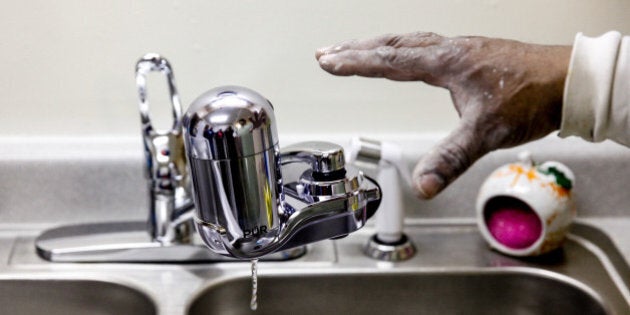
TORONTO — Water toxicity experts estimate that roughly 10 per cent of Canadians are at risk of being exposed to lead through their drinking water as Americans in Flint, Mich., grapple with an ongoing drinking water scandal.
Research funded by the Canadian Water Network estimates that about 60,000 households in major cities across the country still have lead service lines connecting the home to the municipal water supply.
Senior researcher Graham Gagnon says each member of those households could find themselves consuming lead, which the study says is unsafe for human consumption in any quantity.
Gagnon, who serves as director for the Centre of Water Resources Studies at Dalhousie University in Halifax, says lead service lines can also be present in smaller communities and in larger buildings such as schools.
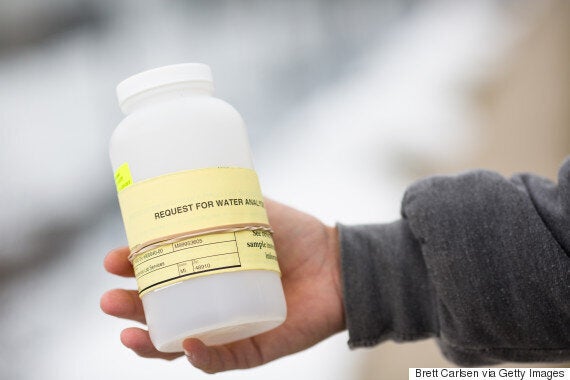
A water collection device is handed out to citizens of Flint for testing contaminated water on January 23, 2016 in Flint, Michigan. (Photo: Getty Images)
Exposure could also come about through buildings using fixtures, faucets or other components containing lead.
But Gagnon and others say Canada's cities have recognized the risks and made a concerted effort to decrease the number of lead pipes in their systems in recent years.
Gagnon believes such efforts may protect those cities from the sort of lead poisoning crisis unfolding in Flint, though adds communities that haven't launched replacement projects are at greater risk.
"It would probably be a bit surprising to me for the larger municipalities," Gagnon said of the likelihood of a Flint-style situation in Canada.
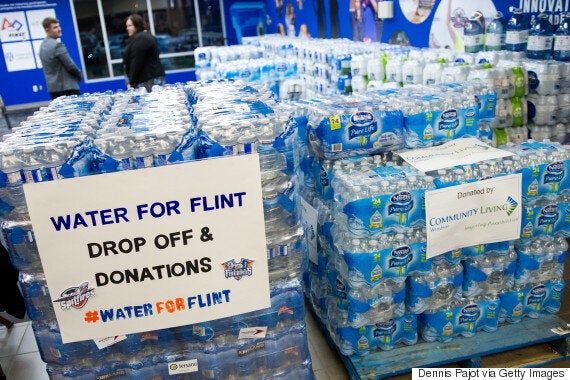
Fans bring in donations of bottled water prior to the game between the Flint Firebirds and the Windsor Spitfireson January 21, 2016 at the WFCU Centre in Windsor, Ontario, Canada. (Photo: Getty Images)
"For the smaller to mid-sized municipalities ... it wouldn't necessarily surprise me only from the standpoint that the resources needed to mount a lead service line replacement program are pretty substantial. Knowing some of these cities, they would be challenged to really take this on."
Not all cities are at equal risk of lead exposure through their main infrastructure.
Bu Lam, manager of municipal programs at the Canadian Water Network, said communities built before about 1950 are far more likely to have used lead in either their municipal water mains or the service lines connecting them to local buildings.
The period between 1950 and 1990 served as a transition period, when cities began shifting away from the toxic material, he said. Buildings erected after 1990 are far less likely to feature potentially poisonous pipes, Lam added.
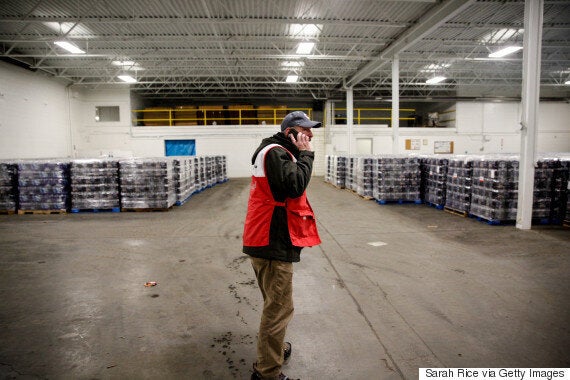
American Red Cross volunteer John Lohrstorfer in the warehouse full of water bottles for Flint residents on January 21, 2016 in Flint, Michigan. (Photo: Getty Images)
The bulk of problems arise, he said, when lead-free municipal water lines are connected to old lead pipes. Cities can't take charge of making those upgrades, he said, since service lines run off city property and become the responsibility of each individual homeowner.
That responsibility can't be fulfilled on a tight budget. Lam says he's heard of prices ranging anywhere from $2,000 to $5,000, with rates in each city varying according to labour cost, property size and a host of other factors.
Despite the cost, Lam says Canadians must take some responsibility to guarantee their own safety.
"The ideal situation, of course, is not to have any lead pipes at all," he said. "That's not the reality. The reality is that municipalities and homeowners have to play an equal role in trying to address that situation."
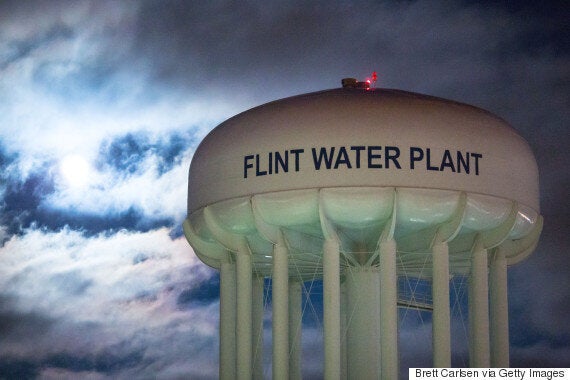
The City of Flint Water Plant is illuminated by moonlight on January 23, 2016 in Flint, Michigan. (Photo: Getty Images)
Research conducted by Gagnon and colleagues in Montreal, Quebec City, Toronto and St. Catharines found that failure to upgrade service lines can in fact leave the residents of a home at greater risk than they were before cities improved their water mains.
Gagnon said lead service lines connected to copper city pipes are more likely to direct unhealthy material into the water as a result of the chemical reaction between the two metals.
Other metals and compounds pose less risk, but Gagnon said the best solution is to ensure both city and home service lines are made of the same material.
He said cities have started introducing some innovative strategies to lessen the cost for residents, including zero-interest loans that get repaid through the home water bill.
Gagnon said situations like the one in Flint, combined with a 2010 corrosion control guideline from Health Canada and the "greater outreach" that municipalities have undertaken, may help to reduce the number of Canadians at risk in the years to come.
Follow @mich_mcq on Twitter